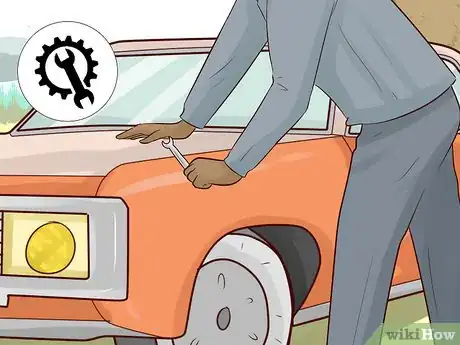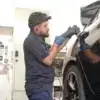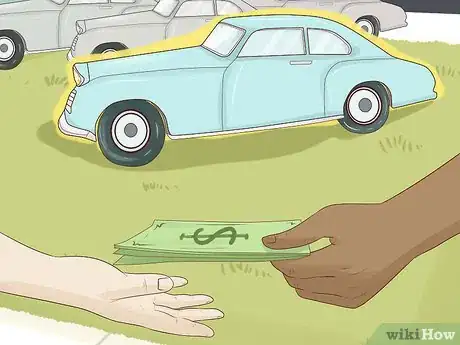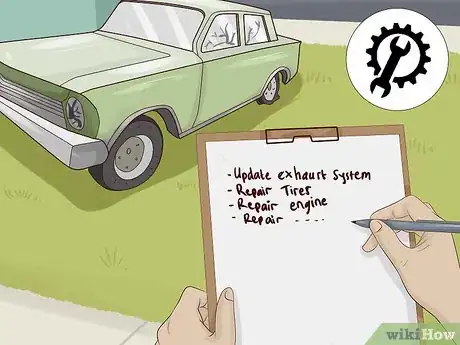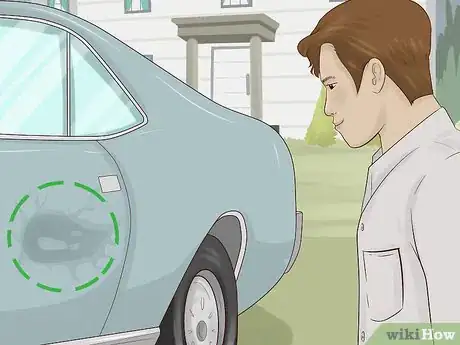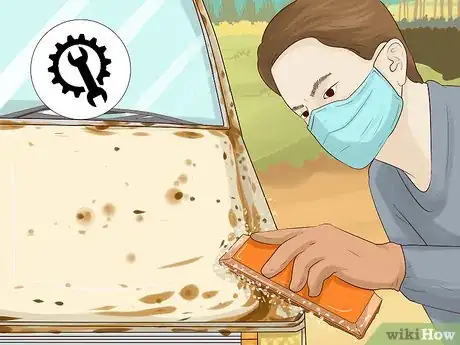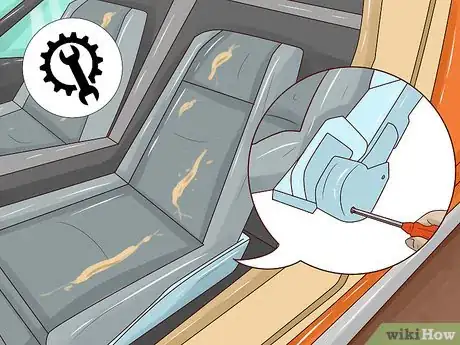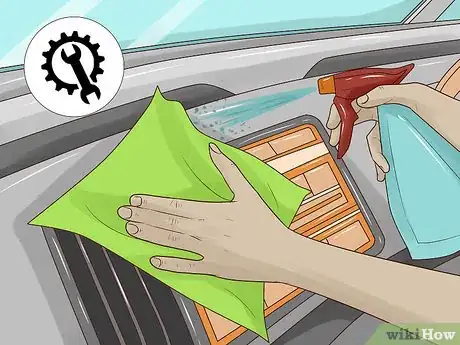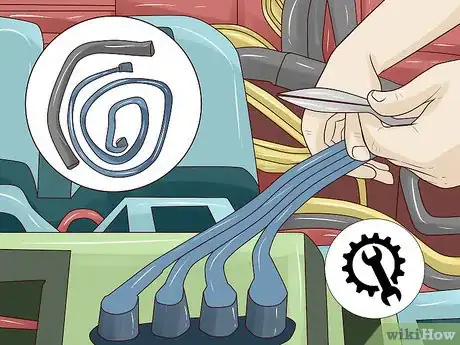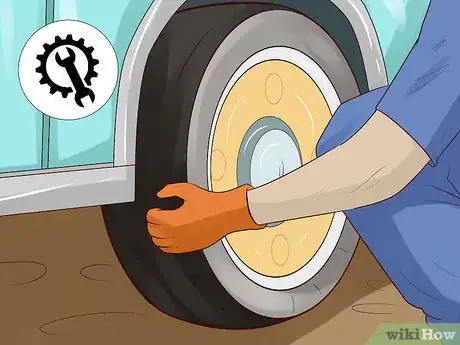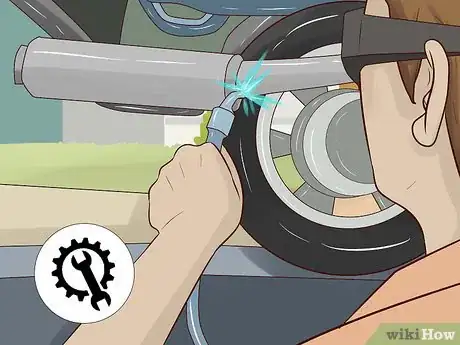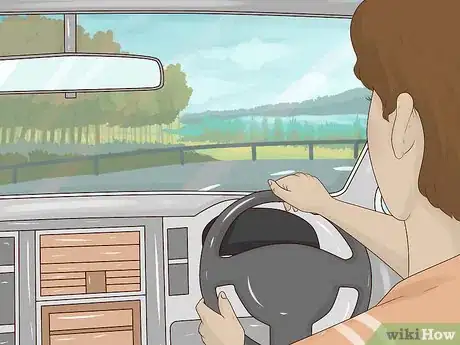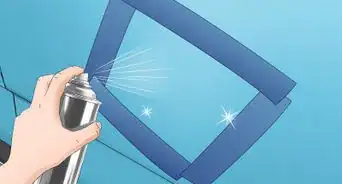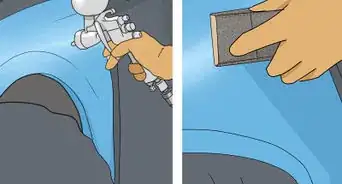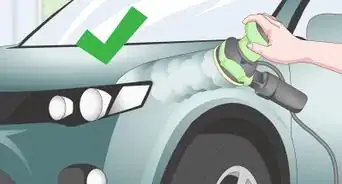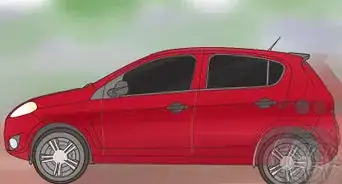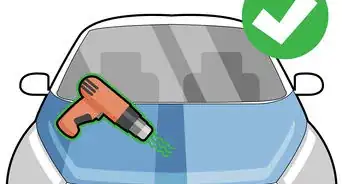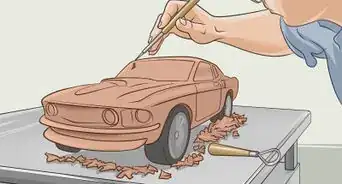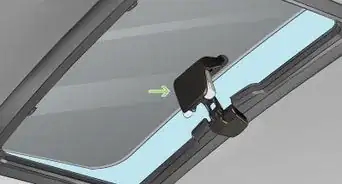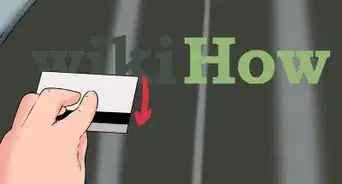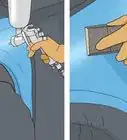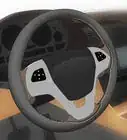This article was co-authored by Angel Ricardo. Angel Ricardo is the owner of Ricardo's Mobile Auto Detail headquartered in Venice, California. With over 10 years of experience in mobile detailing, Angel continues to attend auto detailing trainings to improve his customer service and auto detailing skills.
There are 7 references cited in this article, which can be found at the bottom of the page.
wikiHow marks an article as reader-approved once it receives enough positive feedback. In this case, 91% of readers who voted found the article helpful, earning it our reader-approved status.
This article has been viewed 104,152 times.
Old cars often capture our imagination and envy. Auto enthusiasts the world over appreciate the vision and dedication (not to mention the cost) that goes into restoring one of these mechanical marvels. If a restore is on your mind, just understand that it means repairing and revitalizing all parts of the car from the paint to the engine. Careful searching can often help you find a car with some systems/cosmetics intact.
Steps
Choosing the Right Car
-
1Decide what you want. Are you looking for one specific car, a 1969 Charger for example? Or are you looking to do a restoration that falls in your skillset? Maybe you are a great mechanic but hate bodywork or vice versa.
-
2Consider the state of each car. Some vehicles may need more extensive mechanical work, while others may only need the oil changed. Likewise, some car bodies will be in pristine condition while others might look like a pile of rust. Check for things like a solid structure or a running motor and only take on repairs that you are comfortable with doing.Advertisement
-
3Evaluate the costs. The less work you need to do to a car, the more you’ll pay for it upfront. The worse condition the car is in, the cheaper it will be upfront. Be careful and consider the costs of repairs, also.[1] You wouldn’t want to spend $500 less on a car that will cost you $5,000 more to repair.
-
4Buy your dream car. You can find these at auction houses, your father's garage, or basically anywhere as long as you actively look. Some people hold a lot of value in their old cars, and others simply see them as junk. Be sure to negotiate the best deal on the car. You’ll need any money you save for the restoration.
-
5Make an outline, or estimate, of what the car will need. This way you know how big the job will be and approximately how much it will cost right from the get-go. This will help you to plan the restore at a pace that you can accomplish without disappointment.[2]
Restoring Exterior Beauty
-
1Look for dents on the body panels. It is a common misconception that dents can just be “popped out.” For the most part, this is untrue, though for some specific cases there does exist a highly specialized technique called paintless dent repair (PDR).[3] Almost always, fixing a dent will mean grinding off the existing paint, pulling the dent, filling it with body filler, priming to protect the metal, and then repainting the panel.
-
2Inspect the condition of the paint. Even if you do not like the color or intend to paint the whole car anyway, a healthy coat of paint on all of the panels means a couple of things. First, a lack of serious scratches on the original paint means that this car likely wasn’t involved in major accidents that could damage the frame. Second, paint protects the metal panels on your car from rust.[4]
- All bare metal should be primed before painting. All metal should be covered with primer, paint, or another appropriate sealant to protect from rust.[5]
-
3Repair all rust properly. Even just a small amount of rust will create lasting problems along with the metal body panels on your car. If you have any rust you cannot simply paint over it. You should remove it all and if that creates a hole in the panel you will have to patch it. There are no shortcuts with rust.[6]
- Substances you can use to remove rust include steel wool and acid, depending on where the rust is located on your car. Be very careful using these products, and talk to a professional if you are not comfortable using them yourself.[7]
-
4Polish or repair any chrome pieces. Old cars often sport chrome bumpers, mirrors, or other parts. These definitely shine the vehicle up but aren’t as tough as they look. If the imperfections are small then you might be able to repair the part. If the chrome is seriously damaged you will have to replace the part or strip the chrome and re-chrome it.
Restoring Interior Beauty
-
1Evaluate the condition of the floor. An easy way to disguise floor problems is to use a nice-looking floor mat. Make sure you look underneath any mats, seats, or other hiding places for floor damage.
- On the end, a hole in the floor will mean welding a patch, priming, and painting inside your cab. This can be a huge project that takes a lot of time.
-
2Make note of any damaged upholstery. Start by taking out your seats. This is usually done by removing the four bolts on the runners that attach the seat to the floor and then lifting the seat out. Even if no repair is needed this will allow you to give the seats and the interior deep cleaning. Inspect the seats.
- If there are any cuts or gashes in the upholstery, you can try to repair them. If they are large or you have multiple damages, your seats may need to be reupholstered.
- Stains can often be removed by cleaning with appropriate stain removers. If you can’t get the stain out, you may consider reupholstering the seat.
-
3Assess the condition of the dash. It will likely need to be cleaned up, but if there are any scratches or other damage to the textured plastic it typically cannot be repaired. This means replacing the damaged pieces. A service manual will help.
Restoring Performance
-
1Start with the engine. If your project has a solid running engine, this is a good time to clean it up and change the oil. If the engine is not in running order, you will need to repair or rebuild it. This can range from a small, quick job to a very tedious and time-consuming process. Be sure you know what you are getting into ahead of time.
-
2Replace any belts, hoses, or wires that are worn. From drive belts to radiator hoses and spark plug wires, your car depends on engine accessories to run. When dealing with a restore, keep in mind that these components may be aged and worn. You should take a careful inventory of what needs to be replaced and replace it.[8]
-
3Maintenance of your drivetrain. The engine creates the power, but without a solid drivetrain to deliver it to the pavement, it’s useless.
- Check your transmission fluid and add some if needed.
- If you’re restoring a manual shift car (which is likely), check the clutch to make sure it is working properly.
-
4Check your tires. Be sure that they are not worn, damaged, or flat. If they are flat try filling them up with air. If they do not hold you might be able to patch the leaking tires. If not you’ll need to replace them. The tread should be at least 2/32” deep, but 4/32” is recommended.[9]
-
5Update your exhaust system. It is important to have an efficient exhaust. This decreases harmful emissions and also increases gas mileage which saves you money.[10]
-
6Drive your dream car. Once the car has been restored, the only thing left is to do is drive it. Be sure to show the car off to all of your friends.
Expert Q&A
Did you know you can get expert answers for this article?
Unlock expert answers by supporting wikiHow
-
QuestionHow do you start restoring a scratched car?
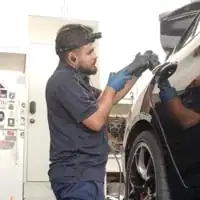 Angel RicardoAngel Ricardo is the owner of Ricardo's Mobile Auto Detail headquartered in Venice, California. With over 10 years of experience in mobile detailing, Angel continues to attend auto detailing trainings to improve his customer service and auto detailing skills.
Angel RicardoAngel Ricardo is the owner of Ricardo's Mobile Auto Detail headquartered in Venice, California. With over 10 years of experience in mobile detailing, Angel continues to attend auto detailing trainings to improve his customer service and auto detailing skills.
Auto Technician
-
QuestionWhat can I use to remove rust on an old car?
 Angel RicardoAngel Ricardo is the owner of Ricardo's Mobile Auto Detail headquartered in Venice, California. With over 10 years of experience in mobile detailing, Angel continues to attend auto detailing trainings to improve his customer service and auto detailing skills.
Angel RicardoAngel Ricardo is the owner of Ricardo's Mobile Auto Detail headquartered in Venice, California. With over 10 years of experience in mobile detailing, Angel continues to attend auto detailing trainings to improve his customer service and auto detailing skills.
Auto Technician It depends on what type of car and where the rust is. If the rust is inside of a rim or a wheel, for the most part, then you can use acid. If you use acid, you have to really know what you're doing because otherwise it could lead to more damage. If you don't know how or are not comfortable using acid, then don't even touch it and talk to a professional. For chrome, you can use steel wool and you don't have to use acid.
It depends on what type of car and where the rust is. If the rust is inside of a rim or a wheel, for the most part, then you can use acid. If you use acid, you have to really know what you're doing because otherwise it could lead to more damage. If you don't know how or are not comfortable using acid, then don't even touch it and talk to a professional. For chrome, you can use steel wool and you don't have to use acid. -
QuestionI have a 67 Olds Cutlass Supreme that has extensive rust. Would it make sense to cut top off and put a new one on the car?
 Community AnswerNo, because it will not be as strong as before. What you can do is buy a donor car just for the body.
Community AnswerNo, because it will not be as strong as before. What you can do is buy a donor car just for the body.
Warnings
- Do not unhook anything until you have the replacement.⧼thumbs_response⧽
- Some restorations are more difficult than others. Be prepared to spend a lot of time and money rebuilding an old car.[11]⧼thumbs_response⧽
- It is possible that the car you restore will be worth less than you spent on it. Just keep this in mind.[12]⧼thumbs_response⧽
References
- ↑ Angel Ricardo. Auto Technician. Expert Interview.1 October 2019.
- ↑ https://www.carsdirect.com/classic-cars/how-to-restore-a-classic-car-on-a-budget
- ↑ http://www.edmunds.com/car-care/confessions-of-a-paintless-dent-remover.html
- ↑ http://www.paintpro.net/Articles/PP203/PP203-Metallic_Paint.cfm
- ↑ http://www.paintpro.net/Articles/PP203/PP203-Metallic_Paint.cfm
- ↑ http://www.paintpro.net/Articles/PP203/PP203-Metallic_Paint.cfm
- ↑ Angel Ricardo. Auto Technician. Expert Interview.1 October 2019.
- ↑ http://www.carcare.org/car-care-resource/vehicle-systems-overview/
- ↑ http://www.tirerack.com/tires/tiretech/techpage.jsp?techid=157
- ↑ http://www.carcare.org/car-care-resource/vehicle-systems-overview/
- ↑ http://autoweek.com/article/car-news/four-reasons-not-restore-vintage-car-you-might-be-better-buying-car-someone-else
- ↑ http://autoweek.com/article/car-news/four-reasons-not-restore-vintage-car-you-might-be-better-buying-car-someone-else
About This Article
To restore an old car, you'll want to fix any dents, scratches, rust, or chipping paint before you apply a new coat of paint to the entire vehicle. You should also repair and polish any chrome pieces on the car, like the bumper or wheel rims. In addition to fixing up the exterior of the vehicle, you'll need to restore the performance so the car functions properly. That includes the engine, drivetrain, tires, exhaust system, and any faulty belts, hoses, or wires. To learn how to restore the interior of an old car, scroll down!
